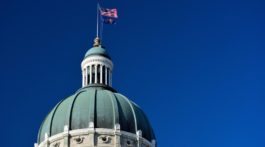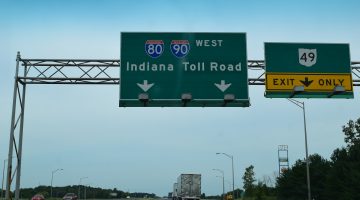by Chris Watts
Last July, the COVID crisis had crushed Indiana tax collections by more than a billion dollars, and budget officials were bracing for the worst. But a year later, revenues are surging enough to give Hoosiers an automatic income tax refund in 2022. What’s the story behind state and local finances, and why does it matter beyond the unexpected credit on next year’s tax return?
In mid-April, Indiana’s forecast committee added $463 million to its December revenue projections for Fiscal Year 2021 (which ended June 30th) and boosted earlier estimates for FY2022 and 2023 (the new state budget cycle) by nearly $2 billion. The news helped Governor Holcomb and the General Assembly reach a two-year spending deal featuring more than $16 billion for local schools.
Even these predictions aren’t optimistic enough so far. Revenues from April through June beat the revised forecast by $1.2 billion, pushing Indiana’s surplus to more than $3.9 billion. By law, $1.09 billion of that total will be divided equally between teacher pension funds and automatic tax refunds.
Many states find themselves in surprisingly good fiscal shape emerging from the pandemic. In Indiana’s case, sales tax revenue was solid in 2020 (helped by federal stimulus spurring consumer spending and a 2019 decision to tax more online purchases) and much of the impact on income taxes was timing; the extended filing deadline in 2020 pushed about $900 million in tax payments into a new fiscal year.
The outlook for local governments is less celebratory (and more complicated) but still confident as counties, cities and towns craft 2022 budgets.
Property taxes are still the largest source of local revenue. Tax assessments are based on real estate trends, and the housing market is booming in many parts of Indiana. Residential property values (measured by the federal Home Price Index) for 2020 and 2021 (so far) are growing twice as fast as the annual average since 2010.
Indiana’s property tax caps limit individual bills to a percentage of assessed value for homeowners (1%), farmers and landlords (2%) and commercial properties (3%). But local governments also face a restriction on the total property tax revenue they can collect, the maximum levy. It’s worth a little explanation.
This maximum levy is only allowed to increase each year as fast as the six-year average growth of Indiana’s non-farm personal income. This formula has been around since 2002 to protect homeowners when property values rose faster than wages.
The 2022 calculation was announced two weeks ago. Because personal income includes unemployment benefits and certain federal programs, and higher-paying jobs bounced back faster than overall employment across the state, it rose nearly 5.9% in 2020 – the highest of the last six years, nudging the average to 4.3% and adding some breathing room to the local tax base. Based on taxable income and earnings data, local income tax distributions also look stable for 2022.
Beyond “own source” tax revenues, budgets got a shot in the arm – so to speak – from the federal American Rescue Plan Act. ARPA sent more than $7.5 billion in flexible aid to Indiana, divided among state government, school districts, cities and counties. The non-school funds can be used through 2026 for economic recovery, health and safety programs, emergency pay for front-line employees, infrastructure (especially broadband and water system upgrades) and filling COVID-related revenue gaps.
Indiana also used part of the state’s ARPA funding to launch the Regional Economic Acceleration and Development Initiative (READI), a $500 million grant program encouraging regional planning across at least two counties focused primarily on talent attraction. Eighteen READI partnerships across the state are working on development plans due by August 31st.
For many of you, the most exciting part of the last 600 words was the tax refund – fair enough. But Indiana also has plenty of long-term challenges competing for attention: Population growth slowing since the 1990s, an aging workforce, educational achievement and attainment gaps that limit our potential to create high-paying jobs and attract new business investment.
Heading into 2019, Indiana’s per capita state and local revenue hadn’t even recovered from the Great Recession after a decade of expansion. This time around, we have the resources to build economic resilience – investing in schools and a better-prepared workforce, infrastructure to support growth, local services and regional quality of life projects to sway more people and employers to choose Indiana. This post-COVID fiscal climate may not last, but the budget choices we make with it can have a lasting impact.
Chris Watts is the head of the Indiana Fiscal Policy Institute.











